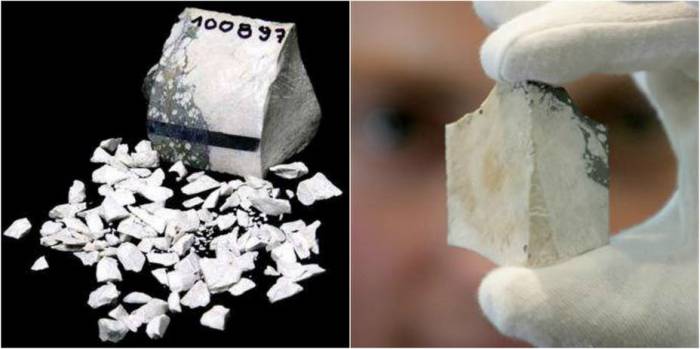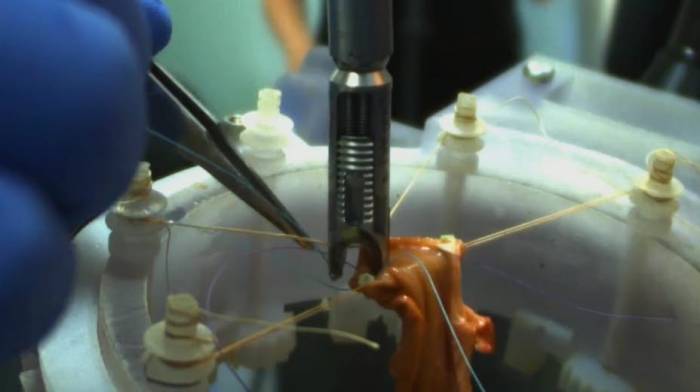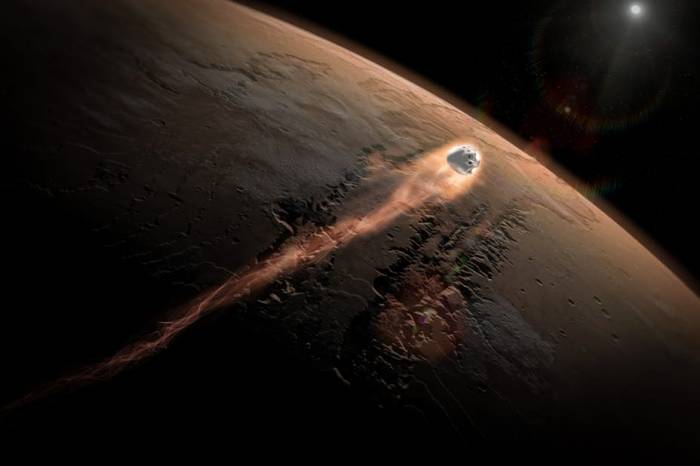The Most Disturbing Scientific Discoveries From The Last 10 Years
Some scientific breakthroughs are so unbelievable you’d think they are straight out of a sci-fi film. Most of these scientific accomplishments are truly baffling and have undoubtedly been a blessing to the human race.
They have been a manifestation that scientists and researchers can go out of their way to further our understanding of the universe. New ideas have been invented while old ones have been scrapped. In some cases, old ideas have been tweaked to make them better.
However, some of these inventions have occasionally left us more vulnerable and have made us question the motive of their creator. For example, artificial amnesia is great in helping us overcome our fears, but doesn’t it expose us to the risk of memory manipulation? And what about the use of robots in medicine? Are scientists confident that it’s time to entrust our lives to machines? We all know the history of man and machines isn’t that great.
In last decade alone, so much has happened in the world of science, so much that we can hardly keep up. But we are going to dwell on those breakthroughs that are most disturbing.
#1 HUMAN HEAD TRANSPLANT
A human head transplant means an entire decapitated head is transferred to a new body. Of course, with consent from both parties.
Successful transplants have already been performed on monkeys, dogs, and rats though without reattachment of the spine. Therefore, those heads have been unable to control the new bodies.
Controversial Italian surgeon Sergio Canavero and his counterpart Xiaoping Ren have been toying with the idea for a long time. They even claimed that they attached the head of a smaller rat to a larger rat and maintained the brain activity of the donor. They performed the experiment on other rats and made the photos public.
Canavero has reportedly also performed the same procedure on a dog. In 2016, he claimed that he had successfully performed a head transplant on a monkey, but the primate had to be euthanized after a short while.
Canavero insists that he has a way of reattaching the spinal cord and that his procedure will likely work. In fact, in 2016, Canavaro made a proposal to have the surgery performed before the end of 2017.
But the first volunteer, Valery Spiridonov, pulled out. The operation may likely take place in 2018, but even if he succeeds, the thought of a head gaining a new body is scary and disturbing.
#2 ARTIFICIAL AMNESIA: WIPING OF MEMORIES AND FEARS
Researchers have established a method that can wipe out specific fears from the human brain using a combination of brain scanning technology and artificial intelligence.
The procedure can treat phobias and anxieties and was developed in 2016 by neuroscientists from the University of Cambridge. It can read and identify a fear memory and it relies on brain scanning to monitor brain activity and to identify patterns that resemble a specific fear memory.
It may be great news to those who suffer from anxieties, phobias, and post-traumatic stress disorders because the method is able to overwrite or wipe out any unpleasant memories and to leave a patient feeling neutral. If it offers treatment to such patients, the procedure can help reduce pressure on mental health services.
This is a useful discovery, but there are concerns: what if it is used to manipulate the brain? What if you are captured and made to forget some experiences or your brain is reprogrammed with an ulterior motive? Now, that is disturbing.
#3 THERE IS A FROZEN LAKE ON MARS
In 2016, NASA revealed that they had discovered a frozen lake on Mars and that it had almost the same amount of water as America’s Lake Superior. This got everyone confused because it suggested that the Red Planet can sustain life; an idea that NASA has consistently refuted in the past. Water is one of the essentials for life and its presence on Mars likely suggested that there may have been life there in the past.
The ice was found around the northern hemisphere in a region of cracked and pitted plains, better known as the Utopia Planitia region of Mars, and was measured using NASA’s Mars Reconnaissance Orbiter.
Covering the ice is a layer of Martian soil that is about 1-10 meters in thickness, which means the water is likely accessible.
The discovery of the water is proof that we cannot completely rule out the idea of little green men on Mars. We also have to ask ourselves what is likely to happen when the temperature there increases? Will the ice melt and support life?
#4 ‘KRYPTONITE’ DISCOVERED IN A MINE IN SERBIA
In 2007, a new mineral whose composition resembled that of Superman-felling kryptonite was discovered in a mine in Serbia. This was confirmed after one of the mineral curators tried to figure out the structure and discovered that it was sodium lithium boron silicate hydroxide: the same composition as the fictional substance, Kryptonite, used in the Superman movies.
However, it was lacking its radioactive green crystal look that is normally depicted in Superman comics. Rather, it was white, powdery, and not radioactive. Based on International nomenclature rules, the mineral had to be named Jadarite.
People started wondering whether it was the fictional substance that sapped Superman’s power.
While the mineral lacks the mysterious glow and has not caused any harm whatsoever, the question of what it is capable of doing still lingers.
#5 ROBOTIC SURGEONS
2016 saw the development of the Smart Tissue Autonomous Robot (STAR) that performed the first autonomous surgery. The robot was created by a group of scientists and surgeons at the Sheikh Zayed Institute for Pediatric Surgical Innovation in Washington DC.
Although the operation was performed on a pig, the technology had been developed to work on humans and to improve the precision of specialist surgeries by performing them with more accuracy than humans.
The bot performed the operation with a bit of human supervision (40% human assistance and 60% on its own). It was able to stitch up a pig’s small intestines (intestinal anastomosis) using its own intelligence, tools, and vision. In fact, SMART did a better job than most human surgeons. Four surgeries were performed and the subjects did not experience complications.
According to the researchers, the assistance did not mean that the robot cannot perform surgery by itself. Instead, they believe human assistance would be appropriate in a real operating room. While STAR is likely to pave the way for bots in the surgery room, the biggest concern is how many people are willing to put their lives in the “hands” of a machine.
#6 THREE PARENT EMBRYOS: THREE PARENTS FOR ONE CHILD
In 2013, there was a scientific breakthrough that allowed for the creation of a three-parent embryo. A three-parent child was actually born in the United States in 2016. The method can be used in assisting women who want to get pregnant but are unable or women who do not want to pass some genetic conditions to their children. The procedure mainly involves using mitochondrial cells from a donor to try and prevent genetic conditions while keeping the genetic information of both parents to make the child theirs.
The first baby was a boy and he was born with three genetic parents with DNA from two women and one man. The baby was born in Mexico with the help of researchers from the New Hope Fertility Center in New York. The child’s mother had genes for a condition referred to as Leigh syndrome, a condition that killed her two former children. But scientists were able to introduce healthy mitochondrial DNA from another woman and replaced her diseased mitochondria. While some people claim the procedure may have adverse effects in the future, the idea of three biological parents makes most people uncomfortable.
#7 INTERGALACTIC DNA CAN ACCESS EARTH
In 2014, Swiss and German scientists discovered that despite the significant pressure changes and the high temperatures, DNA can survive re-entry into the Earth’s atmosphere.
The researchers dotted the exterior of a rocket with DNA fragments to perform the test and were surprised when the genetic blueprints remain unaltered after being exposed to a 13-minute trip to sub-orbital space and back: a trip that was expected to be too hostile for their survival.
In addition, they could even pass on their genetic information after the re-entry.
The fact that DNA can survive re-entry from space raises the possibility of extraterrestrial molecules entering Earth from space. This is disturbing, especially among those who fear the invasion of creatures from space.
It is very much possible that we are exposed to intergalactic bacteria and diseases. And what if we are products of some kind of extraterrestrial? The possibilities are endless.
#8 ‘ARMAGEDDON’ BIRD FLU VIRUS IS CREATED IN A LAB
Sometimes scientists discover breakthroughs by conducting risky experiments. For example, in 2011, a Dutch laboratory came up with a highly contagious strain of bird flu. Their goal was to understand more about the flu and how to mitigate it should it spread to humans.
Since its emergence in 1996, H5N1 had killed millions of birds and the scientists needed a way to develop vaccines and drugs. So they went ahead and came up with a mutated, highly contagious form of the deadly H5N1 bird flu strain.
The researchers had developed a weapon of biological warfare because their virus was capable of wiping out millions of people if it found its way out of the lab. They were even thinking of releasing their methodology, but the U.S. stepped in fast to keep the method a secret.
Some scientists were surprised that the experiment had been performed in a university laboratory instead of a military facility. If the virus had landed in the hands of bioterrorists, all of humanity would be at risk.
#9 LAB-GROWN DONOR ORGANS
In 2013, a Japanese group of researchers became the first team to “grow” a human liver from stem cells. The scientists from Yokohama reported that they had grown a primitive liver in a petri dish using someone’s skin cells.
The researchers took liver cells that were made of someone’s induced pluripotent stem cells and mixed them with other types of cells. Five days later, they could not believe what they were seeing inside the petri dish. The mixture of cells had formed a small 3-D structure that looked like tiny livers.
The organ was incomplete and missed a few parts. Meaning, it may take a few years before the procedure is used in medical facilities.
Regardless, the rudimentary liver was the first complex organ that was grown in the lab and when it was transplanted into a mouse, it worked like a normal human liver.
The research was motivated by the shortage of livers for transplants, especially in Japan. But this major discovery should go a long way in tackling the shortage. But concerns have been raised about using organs that have been created in a lab.
#10 SELF-REPLICATING SYNTHETIC ORGANISMS
In 2014, a group of researchers from California successfully managed to create the first self-replicating synthetic organism that had laboratory-made DNA in addition to the DNA found in all life.
The researchers added the ‘foreign’ DNA into E.coli bacteria and discovered that after the bacteria had self-replicated, the new DNA had replicated along with the conventional DNA.
The new discovery means that the history of life is no longer restricted to conventional DNA subunits – A, T, C, and G – contained in every organism. It means the alphabet has grown longer because it now has ‘alien’ DNA building blocks in its genome.
The breakthrough means that cells could in the future be engineered without any of the DNA subunits used by all organisms. It also makes it possible to come up with cells that can release drugs and other useful molecules.
The discovery makes it possible to create and exploit new forms of life because of the possibility of programming how an organism operates and behaves. It has opened the possibility of having organisms that have unnatural attributes and traits that are not found elsewhere in nature.
The goal of the research was to come up with new types of medical treatments, but the concern is that the technique can be used to create deadly bacteria. And what if augmented bacteria finds its way out of the lab?
#11 PLASTICS CAUSE INFERTILITY AND CAN LEAD TO A RANGE OF OTHER TERMINAL ILLNESSES
For several years, no one really thought about the negative effects of using plastic. It was only until 2014 when it was discovered that Xenoestrogen Bisphenol A or BPA found in most plastic products acted as a synthetic estrogen. This meant that exposure to it could lead to fertility problems or the growth of tumors in a woman’s uterus.
Xenoestrogens have the ability to bind themselves to receptors on spermatozoa and can, therefore, interfere with the function of the sperm. In fact, high concentrations of BPA significantly decrease ATP levels in spermatozoa and consequently prevent sperm motility and motion kinematics.
The conclusion was that high BPA altered sperm function, fertilization, and embryonic development. Longer exposure to this material increases vulnerability to other conditions like breast cancer, heart attack, and diabetes.
BPA possesses weak anti-androgenic, anti-thyroid, and estrogenic activities but has been a prominent environmental pollutant due to its frequent usage in industrial materials, and food packaging. The chemical finds its way into drinks and foods held by plastic containers and its major route into the human body is through ingestion.
#12 MEDICINE DELIVERING NANOMACHINES
In 2015, a group of researchers from the University of California San Diego made it public that they had created nanotechnology that would deliver medication to different parts of the human body. They reported that they had successfully experimented with mice by feeding them the nanoparticles and guiding them through the blood-brain barrier.
They had come up with micromotors which were thinner than human hair and that would be used to deliver medicine to human patients in the future.
The nano-sized vessels are filled with drug molecules and are controlled by small magnets to diseased areas of the body. They can carry and store drugs and can also be used to detect diseased cells.
Their biggest advantage is that they are able to access harder-to-reach areas like the brain. Therefore, they can be used to treat brain diseases like glioblastoma or Alzheimer’s disease. They are also able to go inside normal or cancerous cells and once they have delivered the medicine, they are then directed away. These microscopic machines were built with good intentions, but what if they land in the hands of people with evil intentions?
#13 THERE ARE 1 BILLION EARTH-LIKE PLANETS
In 2014, NASA announced that it had discovered several potentially habitable planets after locating them using their Kepler Space Telescope. NASA scientists estimated that there are1 billion Earth-like planets in the Milky Way alone. Those are a billion places where humans and their plants and animals can live. However, there was no confirmation whether these planets have water or any of the atoms that are a prerequisite for life.
NASA even pointed out that one planet, Kepler 452b, closely resembles Earth and is the most Earth-like planet outside our solar system.
The discovery was another suggestion that there are likely millions of intelligent civilizations in our galaxy. In fact, there may be some that are more advanced than us.
#14 GREENHOUSE GAS LEVELS HIT A RECORD HIGH
There has been growing concern about the high amounts of greenhouse gases that are being emitted into our atmosphere. Scientists are worried that these heat-trapping gases are at record highs and are going to affect our climate and our survival on planet Earth.
The declaration was made by the World Meteorological Organization in 2014. The organization also warned that time was running out if action is not taken immediately.
The main greenhouse gas is CO2 and its levels briefly breached the 400 parts per million (ppm) barrier in early 2014 and in 2015.
High CO2 levels mean hotter global temperatures and adverse weather conditions (floods, high acidity of oceans, rising sea levels, melting ice). All of this is happening now, sadly, and according to experts, we are moving at a frightening speed into uncharted territory.
Already, governments are trying their best to reduce dependence on fossil fuels, which should, in turn, cut CO2 emission, but the trends are still worrisome.
#15 3D BIO PRINTING OF HUMAN SKIN
Soon, those with saggy, wrinkly, or damaged skin will print new skin or patch up their entire aging body, thanks to a Spanish university, Universidad Carlos III de Madrid (UC3M), and BioDan Group, a bio-engineering company that specializes in regenerative medicine.
In 2017, Scientists from these institutions came up with a 3D bioprinter prototype that is able to produce fully functional human skin. The skin can be transplanted into patients or used in various types of tests. For example, when testing chemical products.
The skin is going to be the first living human organ that has been created using bioprinting. It mimics the skin’s structure and has both fibroblasts and protein that give it its mechanical and elastic strength.
While the procedure has been praised for being less expensive, the thought of human parts being mechanically created is disturbing.
















